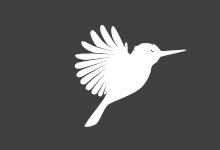Presse // 29. September 2006
Final report for the Workshop on Biol. Inspired Inform. Fusion
The workshop was held to bring together both life and physical scientists, focused on discussing information fusion. The aim was to promote collaboration between the disciplines to develop an
understanding of how to build adaptive information fusion systems. This initial workshop was targeted at bringing the disciplines together to develop a set of research priorities for future collaboration. This was achieved through a two-day programme of tutorials, discussion sessions, student presentations and brainstorming held on the 22nd and 23rd August 2006. The report summarises the overall organisation, participation, evaluation and outcomes of the workshop.
In particular, the report highlights the top three research priorities
that were defined during the workshop brainstorming sessions:
1. Sensory fusion, disorder and clinical application
How does sensory fusion impact on disorder and how can this be applied? In particular, can we develop machine aids in the form of implants or prosthetics to overcome or reduce the effects of disorders? For example, hearing impaired people perform sub-optimally at using visual cues to amplify auditory cues. Could a training regime be developed to enhance the operation of multi-sensory integration to overcome the sub-optimal performance on visual cues?
2. Exploiting effective biological processes for sensory integration
What biological processes can be exploited by computer systems? What do biological sensory systems do well, and conversely what do computer
sensory systems do well? Which biological sensory systems are optimal? Is fusion of benefit or not? Which senses dominate under which circumstances? How does memory impact on sensory integration?
3. Developing a common language for inter-disciplinary communication and collaboration In order to develop collaboration further, a common language is required to overcome terminology differences and to assist in cross-discipline training and dissemination.
Further details, proceedings and notes are available at the website.

